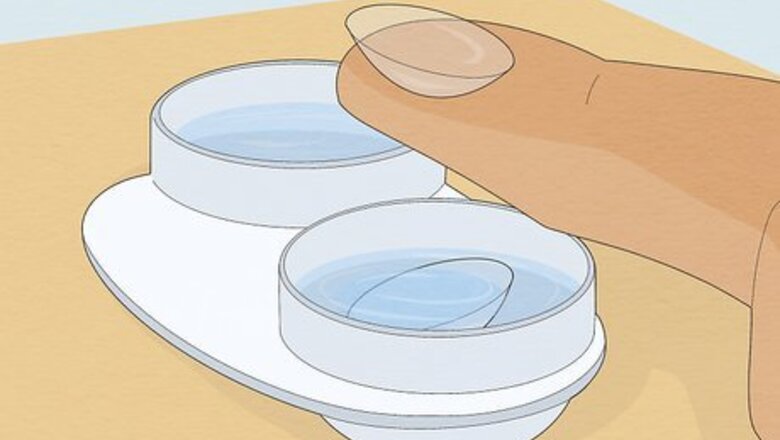
views
Preparing to Remove Your Lenses
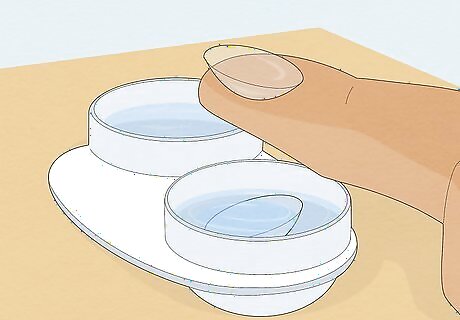
Clean your contact case. Before you begin the process of removing your lenses, make sure you have a contact container cleaned and prepared. Make sure your container is free of debris by rinsing it out. Do not use tap water. Tap water is safe to drink, but not entirely sterile and can contain microorganisms that are harmful to the eye. Rinse out your contact lens container with solution, not water. Either wipe the case dry with a clean, lint-free towel or let it air dry. Air drying is preferable, as it reduces the chance of spreading bacteria or debris into the case. Contact lens cases should only be used for three months before being discarded. Keep track of how long you've had your case.
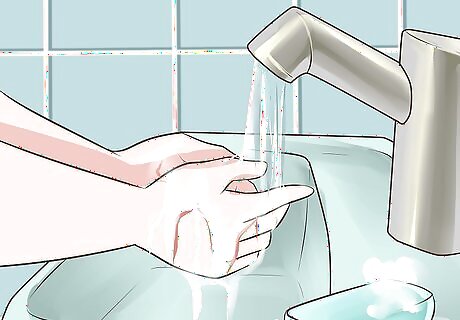
Wash your hands. Before you remove your contacts, or do anything else that involves touching your eye, you should always thoroughly wash and dry your hands. Debris or bacteria you've had contact with throughout the day can lead to eye infection. Get your hands wet with tap water. While people often encourage the use of warm water, temperature is a matter of personal preference. Warm or cold is fine. The soap you use to wash your hands before removing your contacts should be pH neutral and contain little oil or fragrance. Lather your hands, making sure to get between your fingers and the back of your hands. As you'll be touching your eyes directly, pay special attention to washing your finger tips and under your nails. Scrub your hands under running water for at least 20 seconds. In order to keep track of time, you can hum the "Happy Birthday" song to yourself twice. Rinse your hands. Be particularly careful about removing all soap, as soap can irritate your eyes. If possible, air dry your hands before handling contact lenses to avoid getting lint trapped in your eyes. If that's not an option, use paper towel as it's less likely to leave debris on your hands. If you have one, it might be a good idea to use a nail brush. As you'll be having such close contact with your eyes, you want to make sure all debris is safely removed.

Find a mirror in a well lit room. To remove contact lenses, you need to be able to see your eyes. Find a clearly lit room that contains a mirror. Your lens should be position in front of the colored part of your eye. Look directly into your own eyes and see if you can use the mirror to see the outline of your contact. You want to know where the lens is before touching your eye to avoid inadvertently touching the eye itself.

Stand over an appropriate surface. There's a chance you might drop your contact lens. To be safe, make sure you are standing over a clean surface. If you are standing over a sink, make sure you plug the drain so your contact lens doesn't disappear down the plumbing.
Removing the Lenses
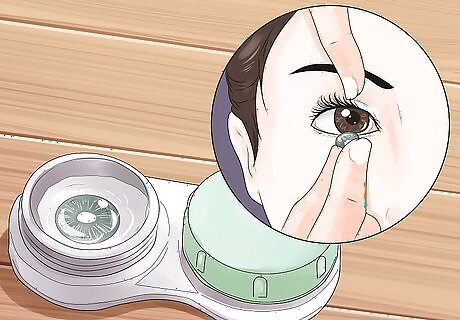
Try the pinching method. There are two methods you can use to remove a contact lens if you have long nails. One is the pinching method, which involves using two fingers to remove the lens. Most people find it easiest to use both index fingers, but this depends on personal preference. Experiment with different fingers to see which combination of fingertips makes you feel most in control. Use only your fingertips and not your nail. You do not want to damage your cornea or the contact lens. Gently push both lenses inward, towards the center of your eye. The lens will pop outward. Secure the lens between both fingers. Do not pinch too hard, as you do not want to break the lens. The lens should not fold in half and opposite sides should not touch. Pull the lens forward until it comes out of your eye.
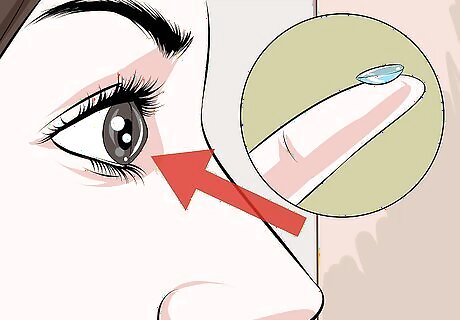
Try the rolling method. Many find the pinching method to be difficult to coordinate. If you don't feel comfortable using it, you could try the rolling method instead. Place your finger tip on the contact lens. Push the lens downward, towards the white of the eye. Push the lens until it reaches the lower lid and gently guide the lens into the lid. The lens should roll over. It will be pushed out, much the same way eyelashes are, and this allows you to grasp it and remove it from your eye.
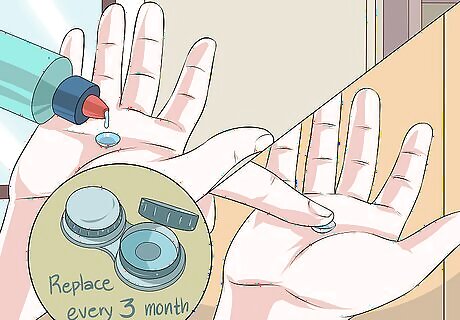
Examine the lens for damage. Long nails can be particularly harsh on contact lenses. After removing your contact, examine it for damage before placing it in the case. With the lens resting on the tip of your index finger, hold it up to the light. Examine the lens for any tears or debris. A damaged lens can cause eye irritation and potentially tear the cornea, causing damage to your eye. If you notice any damage, discard the lens rather than storing it.
Storing Your Lenses
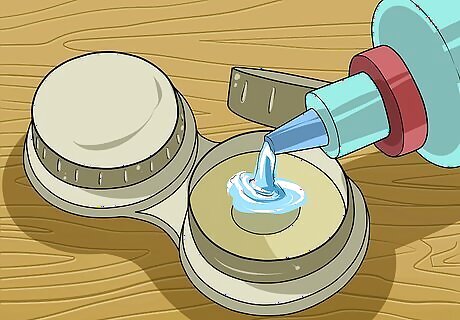
Store your contacts. Once your contact lens is removed, it should be safely stored until you need to use it again. Many people simply top off old solution when storing your lens. As solution is meant to disinfect, it can become contaminated with use. Dump out old solution and replace with it with a fresh dose. Close the lids of the contact case tightly and place the case in a safe place in your home until you need to use your lenses again. Different contact lenses need to be removed for different durations. Some can be worn overnight, while some cannot. Talk to your eye doctor about how often you need to remove and store lenses.
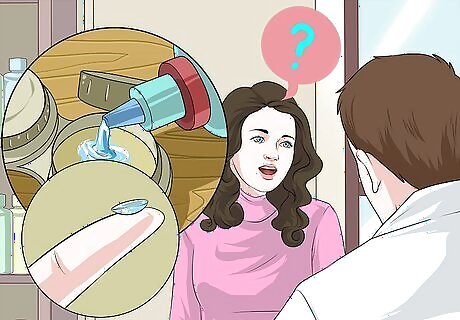
Learn about solutions to contact related challenges. While contacts are fairly easy once you're accustomed to caring for them, there are some difficulties associated with their removal. These can be easily remedied. If you have trouble keeping your eyes open when removing contacts, use one hand to hold the upper lid and eyelashes while you work. If you have difficulty sliding lenses, stare in the mirror and keep your gaze steady. If you lose eye contact, your eyes have moved meaning the lenses positions have shifted. Be careful about rubbing your eyes with contacts in. This can damage the lenses and cause irritation to your eyes.
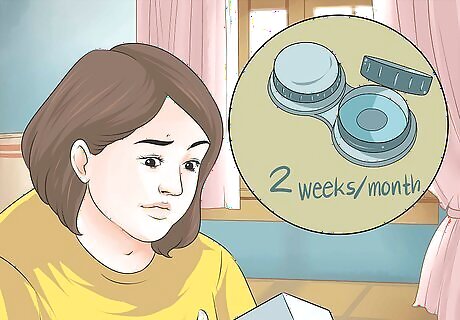
Familiarize yourself with your contacts expiration date. Contacts do not last forever. Lenses come with a specific expiration date, related to the type of lens you wear. Ask your doctor how long lenses will last when being prescribed contacts. If you do not remember the information, check the box for instructions on when to discard lenses.




















Comments
0 comment